Looting of archaeological material is an object-centred notion that frames the past in terms of ownership and property (Meskell 2002; Pollock 2003; Pollock and Bernbeck 2005). Concepts of value and possession can vary widely, of course; several of the Chiriquí gold rush accounts express surprise that local indigenous people did not wish to part with items and would neither sell nor exchange them (e.g. Taylor 1867, 80 ![]() ; White 1884, 243
; White 1884, 243 ![]() ). The work of Mary Helms (e.g. 1998), provides some of the more commonly known discussions of the value of long-distance objects as emblems of esoteric knowledge for people in pre-Columbian Panamá; it is also the case, however, that long-distance ownership of the Panamánian past, if its prehistoric objects are considered synecdochical for it, became a prevalent issue during the 'gold rush'. The Chiriquí Real Estate Company of Baltimore, Maryland, for example, claimed that the land on which all of the graves were found are part of its grant and hence their property (Anon 1859c
). The work of Mary Helms (e.g. 1998), provides some of the more commonly known discussions of the value of long-distance objects as emblems of esoteric knowledge for people in pre-Columbian Panamá; it is also the case, however, that long-distance ownership of the Panamánian past, if its prehistoric objects are considered synecdochical for it, became a prevalent issue during the 'gold rush'. The Chiriquí Real Estate Company of Baltimore, Maryland, for example, claimed that the land on which all of the graves were found are part of its grant and hence their property (Anon 1859c ![]() ).
).
Looting and collecting are intimately paired practices. The concept of collecting that began in the Enlightenment culminated in the establishment of the great western museums, including the Louvre, Hermitage, Smithsonian, and the British Museum, and became inextricably linked to an emergent consumerism (Belk 2001; Buchli 2007, 179). The artefacts taken from Chiriquí graves became incorporated within the interest in collections that extended from Renaissance wunderkammers, or cabinets of curiosities, to the natural history and artistic collections of the modern period. Antiquities are collected for various motivations, though the justification is most strongly the designation of the material as 'art' (Brodie and Luke 2006, 306). Chiriquí ceramics were stated to be 'the finest ware produced in aboriginal America' in terms of 'form and technique' (Joyce 1916, 136). These ceramics were assessed to represent 'a very high stage of development' and the highest level of aesthetic accomplishment in the Americas (Holmes 1888, 54).
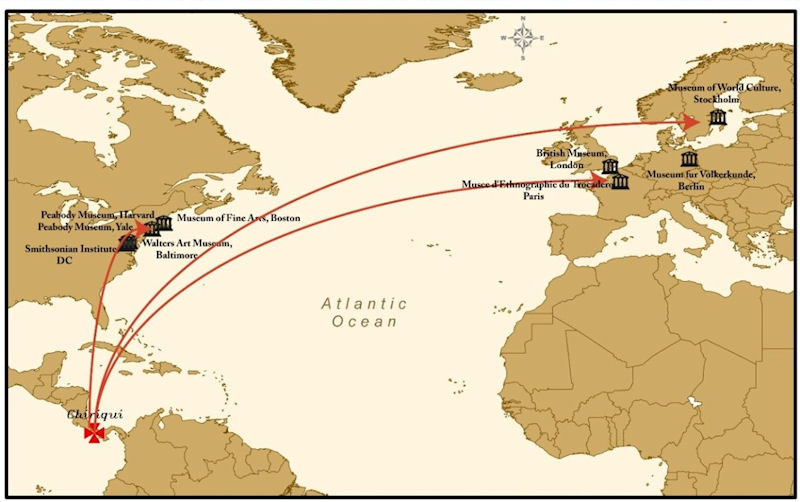
While major ethnological or natural history museums often already had well-established American collections, smaller and more fine-arts-focused museums such as The Walters Art Museum in Baltimore, Maryland, purchased Chiriquí artefacts in order to provide the core of their pre-contact American collections. A series of letters between Henry Walters and Tiffany & Company in New York City in 1910-1911 highlights the ongoing looting of Chiriquí sites [View Comments] decades after the 1859 and 1860 gold rush.
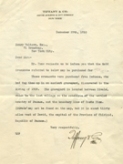

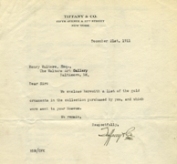
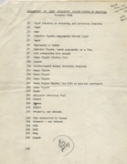
Figures 9-11: Correspondence between the Tiffany & Co. store in New York City and collector Henry Walters (December 29, 1910, January 5, 1911 and December 21, 1911). Courtesy of the Walters Art Museum, Baltimore, Maryland
Figure 12: List of Chiriquí gold objects listed by the Tiffany & Co. store in New York City for purchase by collector Henry Walters (December 1911). Courtesy of the Walters Art Museum, Baltimore, Maryland
Gold prompted the original 19th-century interest in Chiriquí graves, and ceramics originally formed only a lesser valued 'by-product' for individuals seeking profit or adventure in Chiriquí (per Linné 1936, 95). Once they were placed on the global market, however, Chiriquí ceramics became highly valued by collectors both financially and as representations of pre-Columbian culture.
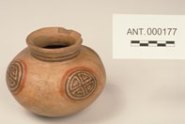
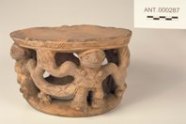

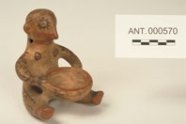
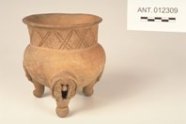
Figures 13-17: Chiriquí ceramic artefacts (ANT. 000177, ANT. 000287, ANT. 000450, ANT. 000570 and ANT. 012309). Copyright Peabody Museum, Yale University
While they were certainly collected, stone tools – including a rich array of chisels, axes, grinding stones, mortars, pestles, seats, zoomorphic figures, stone columns, and stone balls – were by comparison afforded less attention and monetary value than gold or ceramic artefacts; in essence this created a hierarchy of materials in the contemporary valuation of the objects that by no means necessarily echoes the pre-Columbian valuation of them. The intellectual value afforded to the objects was likely imbued by hierarchical perceptions of human development that place stone tools technologically below other materials; unworked or minimally worked stones were afforded even less value than worked stones.
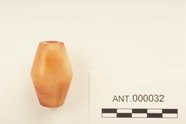
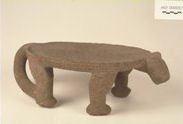
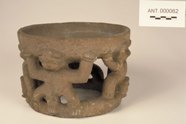
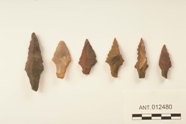

Figures 18-22: Chiriquí stone artefacts (ANT.000032, ANT.000051, ANT.000062, ANT.012480 and ANT.012576). Copyright Peabody Museum, Yale University
The ubiquity of Chiriquí ceramics in the western museum marketplace was noted by Swedish archaeologist Sigvald Linné (1936, 95) who wrote:
It may well be supposed that there does not exist any important museum for general ethnography whose American section lacks a more or less extensive collection of archaeological clay vessels from the Province of Chiriqui, Panamá ... Most probably there are very few spots on the face of the earth where, proportionately to the area, such masses of pottery from ancient times have been brought to light.
German archaeologist Wolfgang Haberland (1984, 235) expressed a similar sentiment, saying that 'by 1900 every major museum owned a collection of Chiriquian antiquities'. As evidenced by museum accession files and antiquarian reports, a large percentage of artefacts in the Chiriquí collections dispersed across the globe were gathered by a single, highly proficient grave opener named J.A. McNeil and purchased by US collectors such as John Lamson, Thomas Appleton, and Joseph Stearns, who then in turn donated them to museum collections. Chiriquí collections can currently be found in Hamburg at the Museum für Völkerkunde; in Gothenburg at the Museum of World Culture (formerly the Ethnographical Museum); Paris at the Musée de l'Homme; and London at the British Museum. The major Chiriquí collections in the United States that are currently accessible online are held by the Yale Peabody Museum, Harvard Peabody Museum, Smithsonian Institution's National Museum of the American Indian, and Smithsonian Institution National Museum of Natural History (NMNH). Some collections are currently inaccessible to the public, such as the Musée de l'Homme which is closed for the period of 2009-2010; other collections at institutions such as the Brooklyn Museum or Buffalo Museum of Science in New York do not have collections that are accessible online currently displayed. Notably, however, collections managers at the Smithsonian NMNH are currently in the process of photographing a large percentage of the ceramic artefacts from Chiriquí (with funding from the Latino Initiatives Program) and are adding these photos into the online database on an ongoing basis.
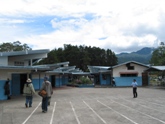
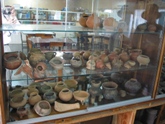
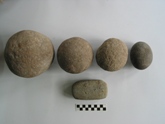
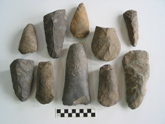
Figure 23: The Benigno T. Argote school in Boquete, Panamá; photo by K. Holmberg
Figure 24: A display case in the Benigno T. Argote school in Boquete, Panamá; photo by K. Holmberg
Figures 25-26: Stone artefacts in the collection of the Benigno T. Argote school in Boquete, Panamá; photos by K. Holmberg
The major museum collections represent only a fraction of the artefacts held by smaller museums and private individuals. While many of these collections are found in Europe and the United States, many local families and schools have their own collections in the Chiriquí area (Holmberg 2007b). In these collections, the determination of value (economic, use, social capital, etc.) for the objects is variously cited in ethnographic interviews I conducted as being linked to personal connections to the past, pride in the workmanship, and a local sense of place (ibid.). In section 4 I provide further discussion of the many forms of value that are attached to Chiriquí artefacts.
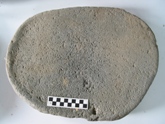
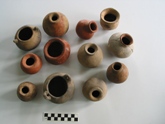
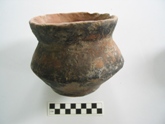
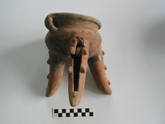
Figure 27: Stone artefact in the collection of the Benigno T. Argote school in Boquete, Panamá; photo by K. Holmberg
Figures 28-30: Ceramic artefacts in the collection of the Benigno T. Argote school in Boquete, Panamá; photos by K. Holmberg
The comments facility has now been turned off.
| Looting in Panama is an ongoing impediment to archaeological research in the contemporary period (see Cooke 1997). The discovery and looting of Chiriqui cemeteries continued throughout the 20th century. In a 1949 letter to US archaeologist Samuel Lothrop at Harvard, US archaeologist Matthew Stirling wrote that a large cemetery was discovered in late December near El Hato de Volca and was decimated within a month (Wood and Shelton 1996, 8, from Stirling's field notes, Accession File No. 364365). Two decades later, German archaeologist Wolfgang Haberland (1963) noted the complete destruction of the site of Puerto Gonzales Viquez on the Panama-Costa Rica border. Given this context, I invite debate regarding the ethics of publishing site locations in archaeological literature (this article included). Is it essential in order to provide subsequent archaeologists with information or is that value outweighed by the potential abetment of looting? | Karen Holmberg |
© Internet Archaeology/Author(s)
University of York legal statements | Terms and Conditions
| File last updated: Mon Oct 11 2010